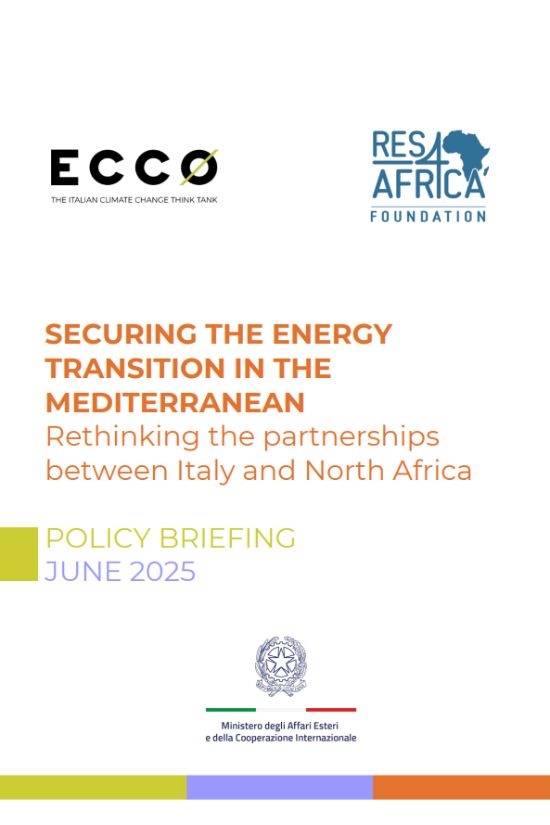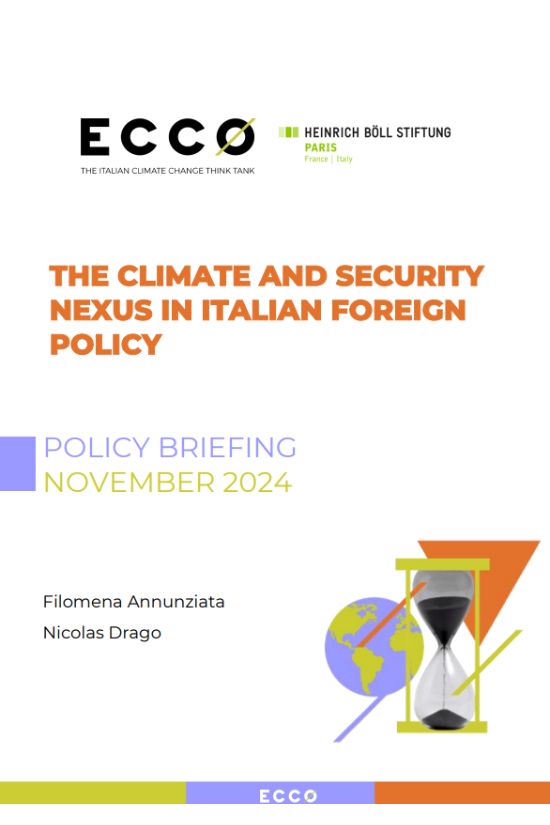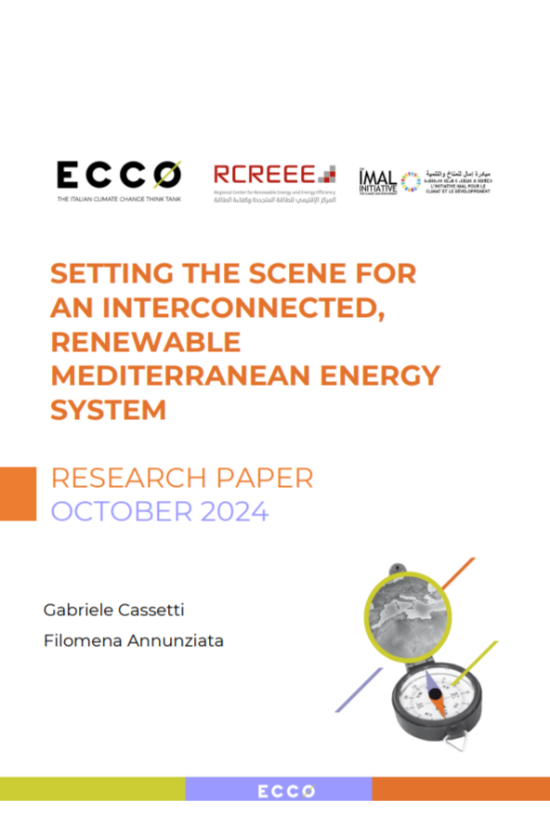Publications
Search
Filters
Authors
/ Alexandra Scott
/ Andrea Ghianda
/ Annalisa Perteghella
/ Beatrice Moro
/ Carolina Bedocchi
/ Caterina Molinari
/ Chiara Di Mambro
/ Chiara Mariotti
/ Chloe Pagliaro
/ Costanza Scano
/ Davide Panzeri
/ ECCO think thank
/ Eleonora Cogo
/ Federico Tassan-Viol
/ Filomena Annunziata
/ Francesca Andreolli
/ Francesca Bellisai
/ Gabriele Cassetti
/ Giovanni D'Amico
/ Giulia Colafrancesco
/ Giulia Giordano
/ Giulia Novati
/ Giulia Signorelli
/ Ilaria Mazzocco
/ Lorena Stella Martini
/ Luca Bergamaschi
/ Luca Iacoboni
/ Mario Noera
/ Marta Lovisolo
/ Massimiliano Bienati
/ Matteo Leonardi
/ Matteo Viola
/ Michele Governatori
/ Nicolas Drago
This policy brief explores the evolving nexus between energy security and energy transition within Italy’s foreign policy towards North Africa, providing recommendations on how Italy can play a leading role – including at a European level – in promoting the energy transition in the Mediterranean region through its relations with North African countries, both at a bilateral and multilateral level.
The Sixth Assessment Report of the Intergovernmental Panel on Climate Change (IPCC) describes the Mediterranean as a climate change hotspot. Despite relatively low levels of greenhouse gas (GHG) emissions, the effects of global warming are felt more rapidly in this region than anywhere else in the world, with temperatures expected to rise by 20% above the global average.
Today, the Mediterranean region's capacity is 90 GW for solar PV and 82 GW for wind . However, the solar and wind potential is estimated at more than 3 TW, meaning that the development of renewables falls short of realising their full potential.
This policy brief explores the evolving nexus between energy security and energy transition within Italy’s foreign policy towards North Africa, providing recommendations on how Italy can play a leading role – including at a European level – in promoting the energy transition in the Mediterranean region through its relations with North African countries, both at a bilateral and multilateral level.
The Sixth Assessment Report of the Intergovernmental Panel on Climate Change (IPCC) describes the Mediterranean as a climate change hotspot. Despite relatively low levels of greenhouse gas (GHG) emissions, the effects of global warming are felt more rapidly in this region than anywhere else in the world, with temperatures expected to rise by 20% above the global average.
Today, the Mediterranean region's capacity is 90 GW for solar PV and 82 GW for wind . However, the solar and wind potential is estimated at more than 3 TW, meaning that the development of renewables falls short of realising their full potential.


